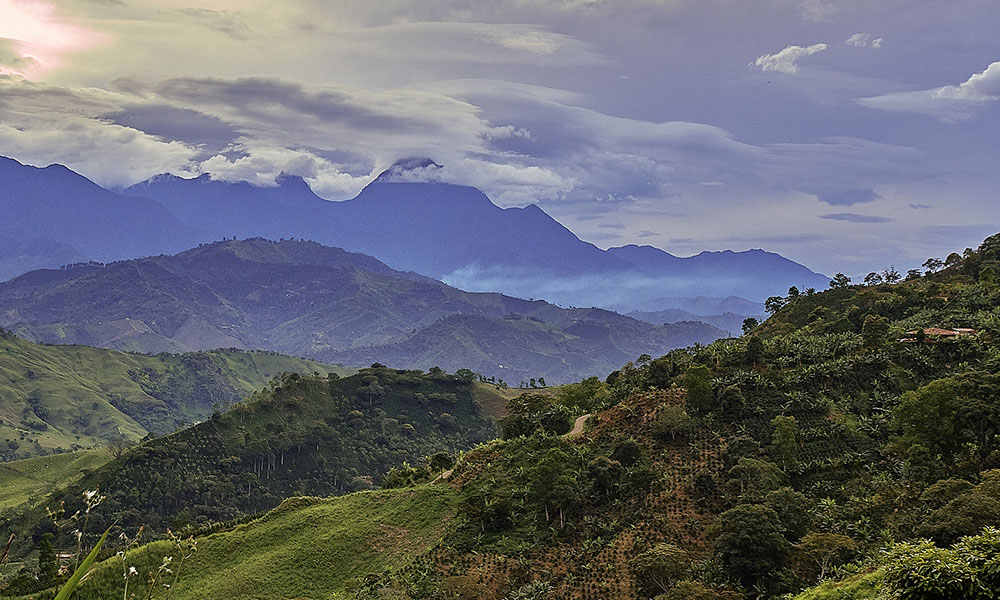
Economics
Colombian Marijuana Farmers Promised Slice of Legal Market
Self-regulating outlaw farmers in South American nation infamous for illicit drug production willfully giving up black-market game for promise of legal bonanza.
Colombia is still the global capital for cocaine production. According to the DEA, 92 percent of the perico seized in the United States originated in Colombia, where cities like Medellin — a jewel of a city tucked into a valley of the Andes Mountains, the hometown of cocaine kingpin Pablo Escobar — are still synonymous with illegal drugs.
But to sell drugs, you need to produce drugs. Cocaine comes from the coca plant. And, duh, cannabis (another export) comes from the cannabis plant. These days, there’s an international market for legal drugs. This is a market Colombia intends to join, as the self-styled “Saudi Arabia of legal pot,” in the words of the Washington Post.
At least some of that newly legitimate marijuana is being grown in greenhouses by technicians in lab coats in the hills above Medellin. Further away, deeper into the bush, are the country’s renegade marijuana farmers. They, too, are going legitimate and going as far as to self-regulate, destroying their own illegal crops for a chance at joining what is promised to be a billion-dollar bonanza.
Telesur brings us the story of Roman Aguirre, a farmer in the mountains of Cauca, a region of southwest Colombia where he once tended a “plantation of 1,500 marijuana bushes.” Aguirre, 61, is still selling cannabis the old-fashioned way — while Telesur was visiting, the television outlet observed young men and women stopping by his farm to buy sacks of cured cannabis — but he wants to take outgoing President Juan Manuel Santos up on the exiting leader’s promise to go legit.
But not every farmer is as eager as Aguirre to join his country’s green rush. Farmers are limited to a half-hectare plot if they want to go legitimate — the amount allotted per farmer, when associated with one of the companies issued licenses. That so far appears to be the only avenue for farmers, who must be associated with one of the companies growing marijuana, unless they go out on their own to obtain costly lab equipment.
So far, 33 Colombia companies have been issued licenses to grow cannabis with government approval and the additional promise of no interference from neither Marxist rebels or drug traffickers, two longtime facts of life in the Colombian hinterlands.
Santos’s plan is for Colombia to eventually grow 40.5 tons of marijuana a year, thus capturing up to 20 percent of a global market pegged at $40 billion a year.
Santos recognizes that to grow all that cannabis, he needs help from the professionals — the very men and women who have been dodging law enforcement and supplying places like the United States with cannabis since the drug was known in the country.
Since the U.S. isn’t accepting cannabis imports — nor is the country exporting marijuana, despite a reported massive surplus in states like Oregon and California, a mother-lode of medicine that also can’t legally cross state borders — the destination for Colombian cannabis will for now be South America, where a reported 60 million people suffer from maladies popularly treated with marijuana like cancer and epilepsy.
But there’s ample opportunity for a larger and broader market. At the moment, the global leader in marijuana exports is Canada. But Canada, with its far-northern latitude and shorter growing season, has higher production costs than a more temperate and fertile area like Colombia.
The theory is that Colombian cannabis would eventually be able to undercut Canadian in cost. The question is how much involvement will be allowed from the farmers like Aguirre who have spent a generation skirting the law — a tale all too familiar to growers in the U.S.
TELL US, have you ever visited Colombia?


























